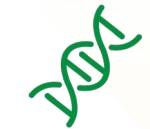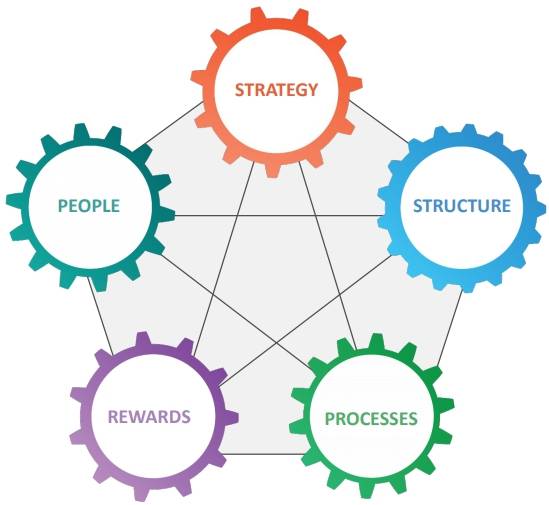Purpose: This document sets out an introduction to 5 proposed themes and a series of potential ideas to include in an initial 3-year CGIAR Business Plan. It is intended to inform discussions during a number of agenda items during the System Council’s 6th meeting on 16-17 May 2018, as referred to in the Provisional Agenda.
Background on business plan concept
At System Council 5th meeting in Cali:
- SC5-04: CGIAR Business Cycle set out a proposal for the CGIAR System to adopt a business planning cycle as a mechanism to deliver a systematic approach to the sequencing of major operational, financial and institutional decision-making at the system level.
- Decision SC/M5/DP4: The System Council endorsed a business planning cycle concept for the CGIAR System, with a proposed multi-year business plan for the CGIAR System being brought for final approval to the System Council’s November 2018 meeting (and launched from 1 January 2019), with an update on progress being provided to the System Council’s May 2018 meeting.
Key delivery dates for a 1st CGIAR Business Plan

Framing the business plan concept
- Overriding purpose: To fully unlock the potential of the 2016 CGIAR governance reforms – which opened the door to a reinvigorated sense of collective ownership of the Centers to help chart the destiny of the CGIAR System, with the System Management Board having been created by the Centers and Funders to be a major convening and guiding force.
- What is emerging from consultations since November 2017: Is a business concept whose elements add up to an ambitious but achievable set of innovations. Not a “big bang” reform, but a series of changes aimed to proactively manage necessary evolution.
- A major challenge – and opportunity – in putting together the building blocks for the 1st multi-year business plan: Is the absence of clarity on a shared CGIAR business model for how CGIAR as a System can deliver on its ambitious goals in the context of an accelerating pace of global change.
- Hence: the proposed first business plan for 2019-2021 will have the twin goals:
- Modernizing and improving today’s CGIAR, yet at the same time,…
- Defining the need, and processes, for potentially radical rethinking and clarifying a shared CGIAR business model, to inform a clear longer-run strategy for the next portfolio and to provide a framework for anticipated ongoing institutional innovation.
- A key consideration on the emerging issues as the business plan concept evolves – they are self-reinforcing: Requiring a change in behavior by all key stakeholders to improve performance. For example, programs will only be able to better drive performance improvements across the System if Funders increase the share of resources allocated to Windows 1 and 2. Similarly, Funders will only do this if they have increased confidence around a plan to improve performance, requiring action by program leaders and Centers. There are many other such symmetries in this business plan concept.
A possible business plan meta-narrative?
An overall objective
To position CGIAR for a relevant role in the 21st century through sharp focus and increased relevance and impact in a rapidly changing context where ‘business as usual’ approaches no longer apply.
A longerrun goal
CGIAR has a high degree of relevance and name recognition as a thought leader, agenda-setter and go-to place for continued innovation in the fields of evidence, analytics and scalable solutions for natural resource management in a broad sense of the term, agriculture and attendant transformations, and nutrition, health and balanced diets – guided by an operational framework that is lean in terms of transaction costs, efficient, more effective, and clear about its brand and unique selling points.
The challenge and opportunity: focus and simplify :
The pace of change in our operating environment is accelerating – we must identify how we can continue to remain relevant in this context. This requires deeper consideration to help frame the business plan and the required planning exercise. The food system is at the center of climate change, health challenges, environmental degradation, jobs creation and of course food security. Drawing on CGIAR’s new narrative, how can CGIAR position itself in the face of the simultaneous transformations in genomics, information technology, markets, the natural environment and nutrition?
We have assets the world is going to need for a long time to come, but only if we adapt and create value from them – reinventing and rebranding ourselves and what we do as and when required. Incredible resources in terms of science capability is at our disposal, as well as influential assets such as our global presence and critical mass in terms of skilled staff that should allow us to continue to rethink and reconfigure the way we work.
Shift further from ‘small stuff’ to ‘big things’ – big, bundled initiatives that can command the funding and long-term drive enabling us to go for large-scale, transformational impact in cooperation with partners. This was the principle in setting up the CRPs – we need to finish the job.
Tackle any spread, repetition and fragmentation. For example bundle efforts strategically; elicit synergy through cooperation; coordinate and align the work of Centers that are doing similar work, bringing the comparative advantages of each cooperatively to bear on the causes we serve.
Lower transaction costs and overhead related to governance and administration. Take internal measures, including structural measures, addressing commons and boundary issues that are unlikely to be fixable by individual Centers acting on their own.
Situating the Business Plan – Global Challenges
Food – the way we grow, catch, transport, process, trade, and consume it – is central to the main challenges facing humanity.
FOOD SECURITY

Yield increases of staple crops have flatlined, struggling to keep pace with growing demand. Agricultural output must increase in harmony with the natural environment by improving access to quality inputs, extension services and innovations along the value chain.
HEALTH

2016 saw this decade’s first increase in the number of chronically undernourished, now more than 800 million people. Two billion people suffer from micronutrient deficiencies, an equal number are overweight or obese.
PROSPERITY

Many of the world’s poor rely on agriculture and natural resources for food and livelihood. More than 85% of the world’s 1.2 billion youth live in developing countries where meaningful employment and entrepreneurial opportunities are limited – contributing to migration and political insecurity.
CLIMATE

Climate change and climate shocks put the most vulnerable people at risk. Heat, drought, flood, and unpredictable growing seasons harm farmers and production systems.
ENVIRONMENT

Water, land and forests are precious, yet finite, natural resources. Agriculture accounts for about 70% of global water withdrawals and is the biggest cause of forest loss. Additionally, a third of the world’s soil is classified as degraded.
Situating the Business Plan: Harnessing knowledge-intensive transformations
To solve these complex challenges, CGIAR partners with governments, national research institutes, civil society and the private sector on 5 global transformations… all knowledge intensive.
GENOMICS REVOLUTION

To accelerate development of a new generation of crops and animals, to improve yield, as well as increase nutrient content and market value – while increasing resilience to climate challenges, pests and diseases.
NUTRITION TRANSFORMATION

To tackle chronic malnutrition, hidden hunger and the availability of safe, healthy and diverse foods by harnessing the political, technological, and market potential of food systems.
ECONOMIC TRANSFORMATION

To revitalize rural economies, bring value to consumers, and leverage the power of economic growth to reduce poverty – targeting equity and the key role of women in production, post-harvest processing and across the value chain.
ENVIRONMENTAL TRANSFOMATION

To drastically cut the environmental cost of agriculture and reverse land degradation by scaling up climate-smart agriculture, and improving soil health, agroforestry practices, natural resource management and water use efficiency.
INFORMATION REVOLUTION

To deliver impact-at-scale by harnessing the power of agriculturally relevant data and analytics for farmers, businesses and governments, and to facilitate two-way information sharing for learning and decision support.
A possible structure for the Business Plan

There are many ways to divide up the complex set of issues to be addressed in the CGIAR Business Plan that will be developed during 2018. This concept document uses the “Star Model” by Jay Galbraith¹ which defines a taxonomy to articulate the elements of a business model, with each element individually important as well as being deeply dependent upon and connected to others in the model.
